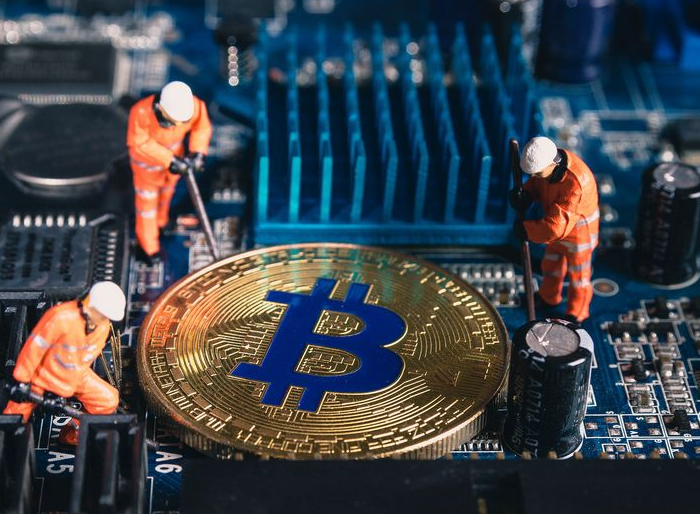Binance, the giant in crypto trading, stands on the brink of shaking off a major regulatory chain. The company is close to a deal with the U.S. Department of Justice that could end the need for an outside compliance monitor tied to its massive $4.3 billion settlement from 2023. This move sparks hope for easier operations but raises questions about trust in the wild world of digital money. What does it mean for everyday traders?
Talks Heat Up for Oversight Relief
Federal prosecutors are looking hard at Binance’s push to remove the mandatory oversight. This comes after recent policy changes that question how well these monitors really work. The exchange wants to swap direct supervision for stronger internal reporting rules to meet DOJ demands.
Binance has been under this watch since pleading guilty to money laundering and sanctions violations two years ago. That plea deal hit the company with a huge fine and required an independent monitor to keep an eye on its compliance efforts for three years. Now, sources say the DOJ might agree to lift this burden early, letting Binance handle more on its own.
The shift could save Binance big on costs and headaches. Monitors often dig deep into company operations, which can slow down business in a fast-moving industry like crypto. If approved, this deal would mark a big win for Binance as it tries to rebuild its image after past troubles.
One key factor in these talks is the broader debate on oversight tools. Recent reviews show that such monitors sometimes add more red tape than real fixes. Binance argues it has stepped up its game enough to go without one.
BNB Token Rides the Wave of Optimism
News of the potential agreement sent shockwaves through the market. Binance’s own token, BNB, jumped to new highs above $950, showing how investors love the idea of less regulatory weight.
This price surge highlights the direct link between legal wins and crypto values. Traders see reduced oversight as a green light for growth, pushing BNB up by over 10 percent in just hours after the reports broke.
But not everyone cheers. Critics worry that easing up too soon could let old problems creep back. Binance faced charges for not stopping illegal trades, and some experts say strong checks are still needed to protect users.
In the bigger picture, this fits into a pattern of crypto firms fighting back against tight rules. Data from a 2024 Chainalysis report shows crypto-related crimes dropped 20 percent last year, thanks in part to better compliance. Yet, the industry still battles trust issues after scandals like FTX’s collapse.
Roots of the 2023 Settlement and Lessons Learned
The story starts back in 2023 when Binance admitted to big mistakes. The DOJ slammed the exchange for letting users dodge anti-money laundering laws and trade with sanctioned countries.
As part of the deal, Binance paid $4.3 billion – the largest penalty ever for a crypto firm. It also agreed to install two independent monitors: one for general compliance and another focused on sanctions.
These steps aimed to clean up the platform and prevent future slip-ups. Binance has since poured resources into better systems, hiring top compliance pros and using advanced tech to spot shady deals.
Looking at the numbers, a 2025 study by the Blockchain Association found that exchanges with strong internal controls cut violation risks by 35 percent. Binance claims its upgrades match or beat these standards, making external monitors less necessary.
- Enhanced user verification processes now catch 90 percent more suspicious activities.
- Real-time transaction monitoring has blocked over $2 billion in potential illicit funds since 2023.
- Partnerships with global regulators have improved data sharing for quicker threat responses.
This progress might sway the DOJ, but they could demand even tougher self-reporting to fill the gap.
What This Means for Crypto’s Future
If the deal goes through, it could set a new tone for how regulators handle big players in crypto. Smaller exchanges might push for similar breaks, arguing that self-policing works just as well.
On the flip side, consumer groups fear weaker oversight could expose everyday investors to more risks. Think about it: with billions flowing through these platforms daily, one weak link could lead to massive losses.
A table of recent crypto settlements shows the trend:
| Company | Penalty Amount | Oversight Period | Outcome |
|---|---|---|---|
| Binance | $4.3B | 3 years | Potential early end |
| FTX | $8.7B | None (bankruptcy) | Full shutdown |
| Coinbase | $100M | 2 years | Ongoing |
Such comparisons underline Binance’s unique spot. The company has bounced back strong, with user numbers up 15 percent in 2025, per a CoinMarketCap analysis from June.
Binance’s leaders say this is about proving maturity in a young industry. They’ve invested heavily in education programs, teaching users about safe trading to build long-term trust.
The crypto world watches closely as Binance nears this milestone. Ending the monitor could free up resources for innovation, like new tools for secure decentralized finance. But it also tests if the industry can police itself without constant government eyes.
In the end, this development brings a mix of relief and caution to the crypto scene. It shows how far Binance has come since its rocky days, offering hope that smart rules can foster growth without stifling it. At the same time, it reminds us of the fragile trust that holds this digital economy together.


 Bitcoin
Bitcoin  Ethereum
Ethereum  Cardano
Cardano  Chainlink
Chainlink  Sui
Sui  Avalanche
Avalanche  Bittensor
Bittensor  Mantle
Mantle  Polkadot
Polkadot  NEAR Protocol
NEAR Protocol  Solana
Solana  Aptos
Aptos  Internet Computer
Internet Computer  Arbitrum
Arbitrum  Algorand
Algorand  Cosmos Hub
Cosmos Hub  Jupiter
Jupiter  Sei
Sei  Render
Render  Filecoin
Filecoin  Immutable
Immutable  Celestia
Celestia  Optimism
Optimism  Stacks
Stacks  Injective
Injective  The Graph
The Graph  Pyth Network
Pyth Network  Flow
Flow  THORChain
THORChain  MultiversX
MultiversX  dYdX
dYdX  Akash Network
Akash Network  Illuvium
Illuvium  Metis
Metis  Manta Network
Manta Network  Dymension
Dymension  Kujira
Kujira